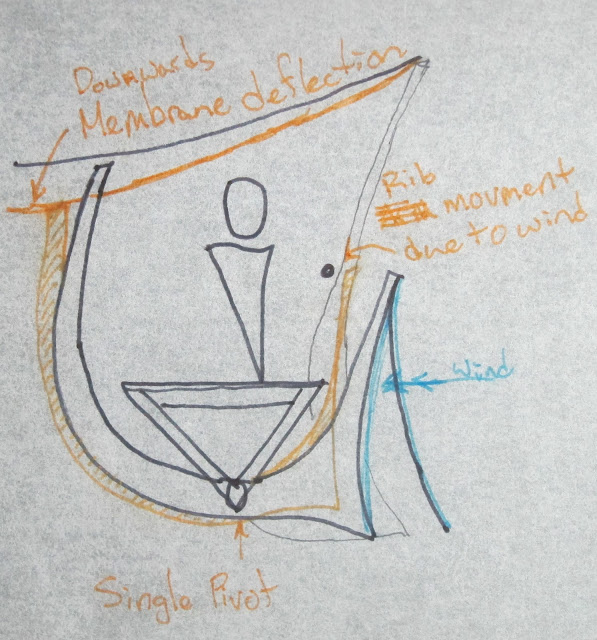There are essentially two elements to the steel aspect of my intervention. There is the cantilevered walkway/lookout structure and the ribs that bisect it, supporting the membrane (the distal ends of which are connected to the rocky edge of the beach). There are two varieties of ribs: static ribs which form the rigid connections for the membrane points, and active ribs which, by way of their canvas wind catchers, rotate with the wind, activating the membrane between the fixed points.
Given the fact that I've had to redesign the steel ribs I've posted up the newest versions below, following the plan that shows the static - active - static rib pattern.
 |
| Active points in blue between the fixed points Note the actual shape of the walkway in plan is not yet final... |
 |
| Static rib. Note the canvas "sail" is seen here in the section because it is continuous, linking all the active ribs. |
 |
| This is an example of an active rib, one that pulls the membrane down as the wind pushes on the canvas "sail." |
Next up, model a rough version of all of this to post before Monday. Also, I've got to start playing with using Grasshopper to approximate the motions that the ribs (and therefore the membrane) will go through during a storm. Using that model (or maybe manually without it) I'll create a series of images showing range of motion in the style of (insert the name of the old school photographer who took pictures of naked people jumping).
J

Good intentions and ideas are great to start the ball rolling but now the concept needs to be modeled and rendered to begin communication. Once that is done, we can refine the geometries, understand the kinetic behaviours, and also begin contemplating the detailing (including how the piece connects to the ground).
ReplyDeleteStarting to remind me of Theo Jansen. I'm sure you guys know about him as he was in one of the TedTalks but I always love coming back to this video:
ReplyDeleteps. sorry i havent mastered embedding into comments yet..
http://www.youtube.com/watch?v=a7Ny5BYc-Fs